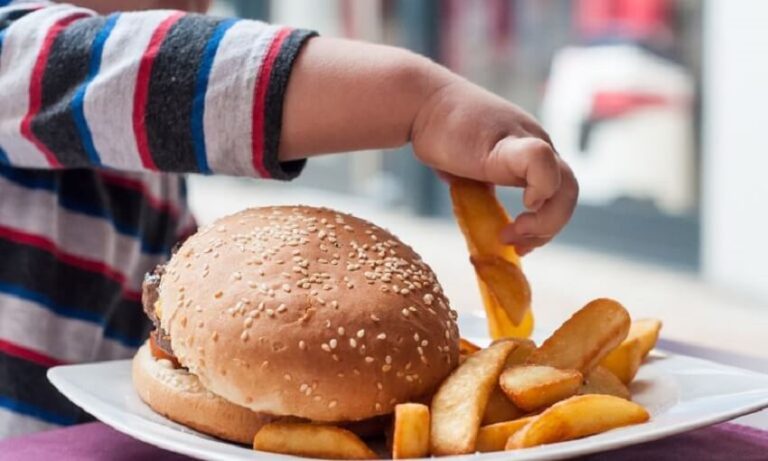Caloric content is a measure that expresses the total energy value of food. In other words, how many total calories do you have?
Studies have confirmed that most people tend to misjudge the calorie content of food. (2.3)
In particular, scientists describe a tendency to underestimate the calories of unhealthy food when it is shown in conjunction with other healthy ones (vegetables and fruits).
Knowing how to calculate the caloric content of food can prevent a person from making this mistake known as a caloric illusion.
This article explains how to calculate the caloric content of foods and dishes. A formula is also proposed to give it a correct use, developing diets to lose weight or increasing muscle mass.
How to calculate the caloric content of food? – Formula
The calculation of the caloric content is based on determining the weight of the food and multiplying it by its amount of macronutrients: carbohydrates, proteins, and fats.
A gram of carbohydrates or proteins provides 4 Kcal, while a gram of fat is 9 Kcal. In addition, if it corresponds to this value, the calories from alcohol must be added, and the theoretical calories from vegetable fiber must be subtracted.
The formula for the caloric content would be:
[Carbohydrates (g) x 4] + [Proteins (g) x 4] + [Fat (g) x 9] + [Alcohol (mL) x 7] – [Vegetable fiber (g) x 4]
To calculate the calorie content of food, it is necessary to consider its weight. For example, a banana varies from 70 Kcal for a small fruit (less than 15 cm) to 135 Kcal for a giant banana (more than 23 cm).
On the other hand, the caloric content of fresh and natural foods can vary (up to 10-20%) depending on the production method and the state of maturity. Returning to the banana example, ripe fruits have higher sugars and, therefore, a higher caloric content.
How to count the calories on a plate?
When it comes to dishes, there are thousands of calories, so the caloric content is expressed in kilocalories or Kcal. To count calories in a word, what you must do is:
- Analyze the macronutrient composition of the ingredients
The first step in counting calories is to analyze the macronutrient composition of each food. The amount of net carbohydrates is calculated as total carbohydrates – vegetable fiber. The complete protein and fat content are straightforward.
- Determine the weight of each
To determine the weight of each ingredient, all you need is a scale. Before preparing a dish, you must record the grams you weigh with a kitchen scale.
- Apply the calorie content formula
The final step in counting the calories in a dish is to apply the calorie content formula: (9 * grams of fat + 4 * per grams of protein + 4 * grams of net carbohydrates + 7 * grams of alcohol).
Caloric content – advantages, and disadvantages
The main advantage of calculating the caloric content of food is having a rough idea of the calories each dish provides. In the first steps of an eating plan, both to lose weight and gain it, reaching the number of calories you need per day is essential.
However, the calorie content formula has several disadvantages:
- Calories can only be calculated correctly when cooking your dishes.
- Weighing ingredients on a kitchen scale takes a significant amount of time.
- The resulting figure will be approximate.
In addition, it does not take into account the assimilation of food. For example, vegetable proteins tend to have lower absorption than animal origin. For example, the actual calorie content of buckwheat will be less than what is reported on the packaging.
Importance of caloric content – nutrients and glycemic index
It should be understood that caloric content is one more characteristic of food, so its importance should not be underestimated.
As an example, the calorie content of a donut is similar to that of a serving of quinoa. Although in the first case, we are talking about food with excess sugar and empty calories. The second is a healthy food with a high content of nutrients.
The correct approach to nutrition should emphasize calculating the caloric content of food and the control of the quality of the food consumed.
For example, foods with a low and medium glycemic index (whole grains and vegetables) provide energy slowly and progressively. What makes a person feel satisfied for long periods.
While simple carbohydrates with a high glycemic index (sugar, sweets, honey) lead to excess weight and are one of the leading causes of type 2 diabetes.
Do you need to count calories?
Although the calorie content formula has drawbacks, it is still helpful for roughly evaluating energy consumed from food.
Once you know the number of calories that food contributes, it is unnecessary to maintain this habit. It is considered risky nutrition behavior.
It weighed cucumbers and tomatoes on an electronic scale to determine the calorie content. However, controlling the amount of oil added to food or knowing the number of calories in a sweet drink will make you rethink whether it is good to consume them.
The caloric content of foods is a measure that allows estimating the amount of energy they provide—the approximate amount of energy that the body can assimilate through digestion. The formula is simple; it requires determining the weight of the ingredients and multiplying it by their amount of macronutrients.
Calculating the caloric content of food is a valuable tool in nutrition to lose and increase it. However, it has disadvantages: it does not consider the number of nutrients or the glycemic index of foods.







